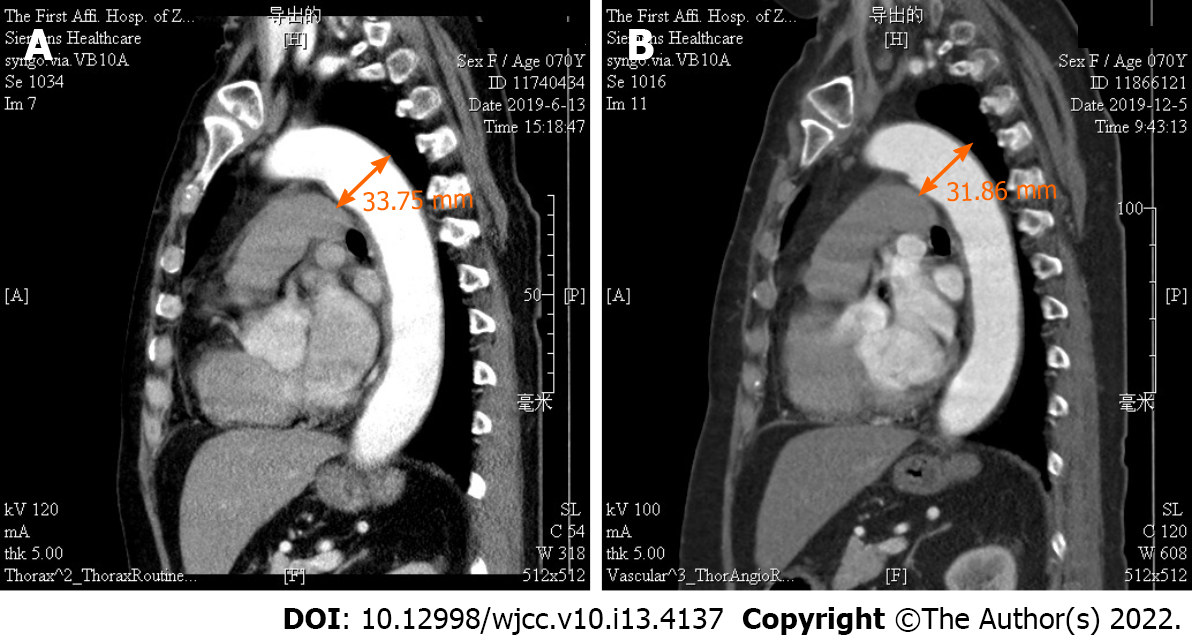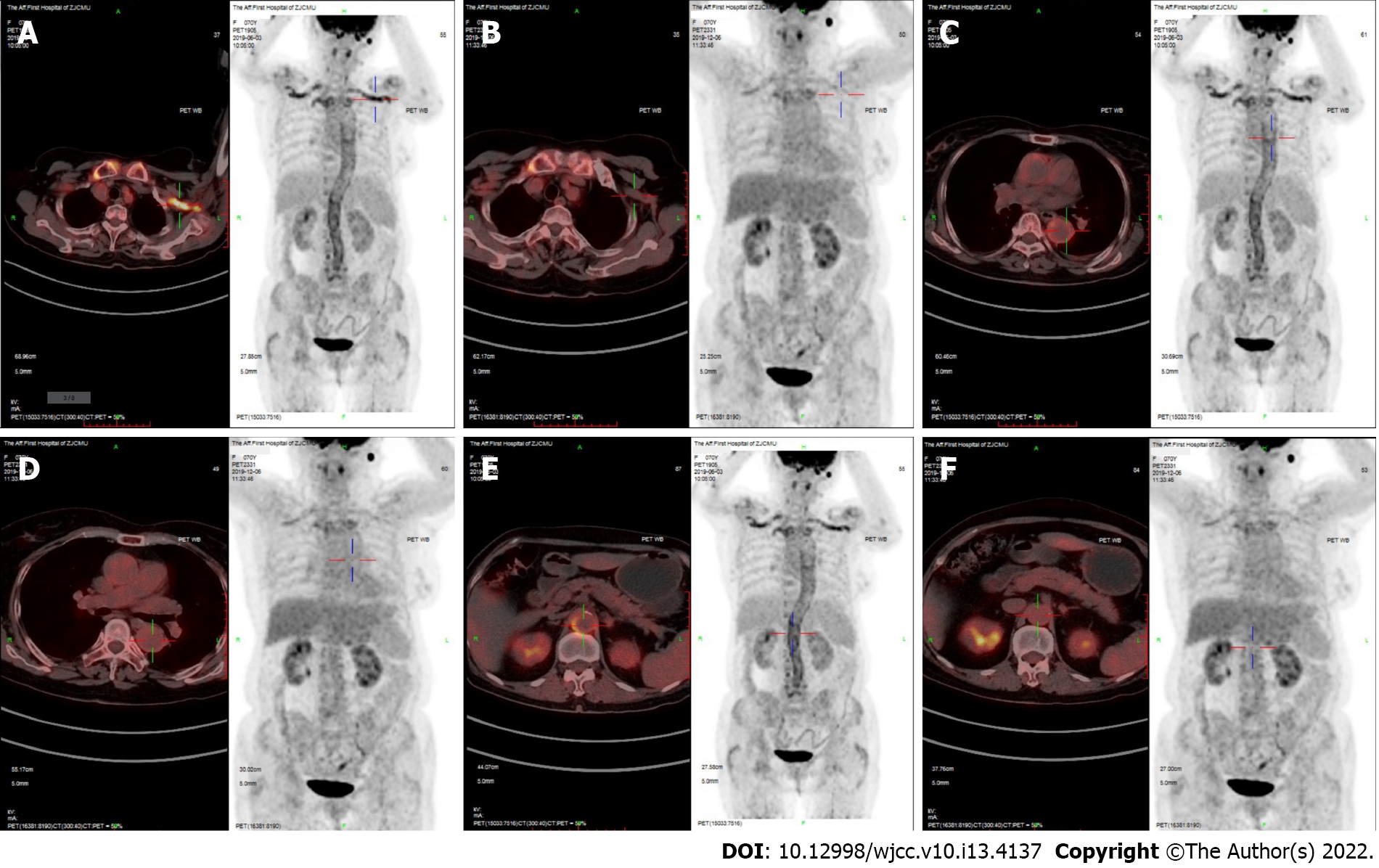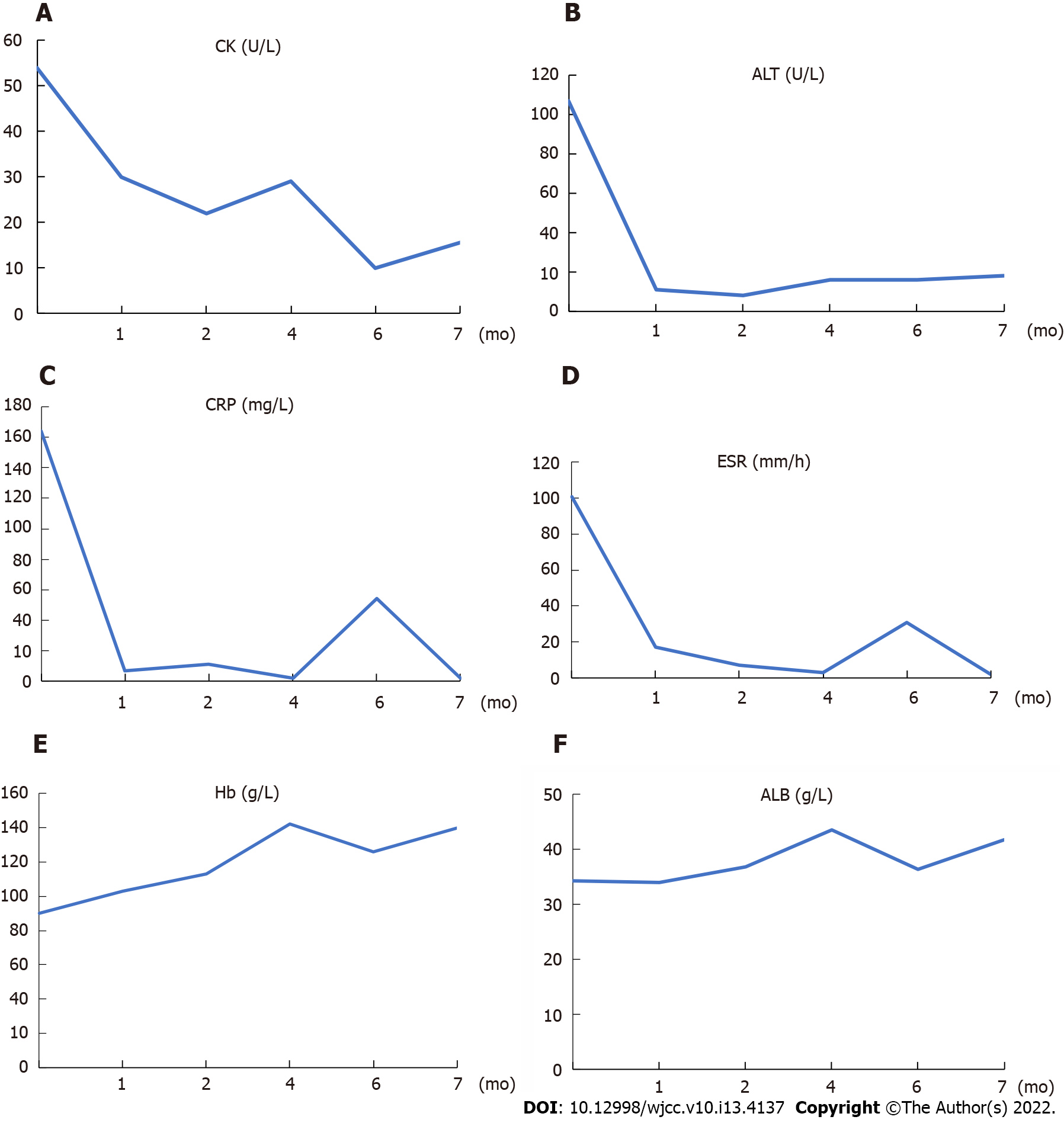Copyright
©The Author(s) 2022.
World J Clin Cases. May 6, 2022; 10(13): 4137-4144
Published online May 6, 2022. doi: 10.12998/wjcc.v10.i13.4137
Published online May 6, 2022. doi: 10.12998/wjcc.v10.i13.4137
Figure 1 Diameter of the aneurysm in the aortic arch on thoracic aorta magnetic resonance angiography (normal range < 32 mm) before immunosuppressive treatment (A) and after 6 mo of treatment (B).
Figure 2 Fluorine-18-fluorodeoxyglucose-positron emission tomography/computed tomography fusion images.
A and B: Fluorine-18-fluorodeoxyglucose (18F-FDG) uptake in the subclavian artery before immunosuppressive treatment (A) and after 6 mo of treatment (B) (SUVmax A > B); C and D: 18F-FDG uptake in the thoracic aorta before immunosuppressive treatment (C) and after 6 mo of treatment (D) (SUVmax C > D); E and F: 18F-FDG uptake in the aorta abdominalis before immunosuppressive treatment (E) and after 6 mo of treatment (F) (SUVmax E > F) by 18F-FDG-positron emission tomography/computed tomography fusion images.
Figure 3 Clinical course corresponding to the adjustment of the immunosuppressive regimen and the glucocorticoid tapering schedule.
Figure 4 Clinical features corresponding to the course of immunosuppressive treatment.
A: Creatine kinase (normal range 38-174 U/L); B: Aspartate aminotransferase (normal range 15-40 U/L); C: C-reactive protein (normal range < 10 mg/L); D: Erythrocyte sedimentation rate (normal range < 20 mm/h); E: Haemoglobin (normal range 110-150 g/L); F: Serum albumin (normal range 40-55 g/L). CK: Creatine kinase; ALT: Aspartate aminotransferase; CRP: C-reactive protein; ESR: Erythrocyte sedimentation rate; Hb: Haemoglobin; ALB: Serum albumin.
- Citation: Fu LJ, Hu SC, Zhang W, Ye LQ, Chen HB, Xiang XJ. Large vessel vasculitis with rare presentation of acute rhabdomyolysis: A case report and review of literature. World J Clin Cases 2022; 10(13): 4137-4144
- URL: https://www.wjgnet.com/2307-8960/full/v10/i13/4137.htm
- DOI: https://dx.doi.org/10.12998/wjcc.v10.i13.4137












